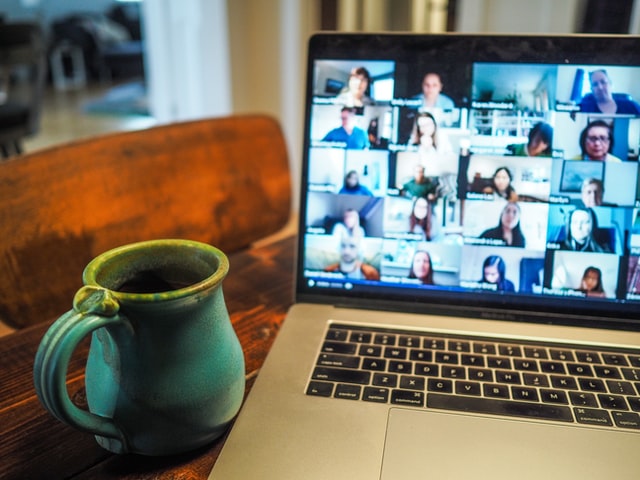How to Run Sprint Retrospective Remotely

For some reasons, you may have Scrum team work remotely. One of the reason is when during today’s situation whereby all the countries around the world are fighting this pandemic Covid-19.
Running Scrum ceremonies will be quite a challenge for Scrum Master, especially the Sprint Retrospective whereby the interactivity needs to be in place. So, how do we do that effectively?
The purpose of doing Sprint Retrospective is to evaluate the last sprint to identify & conclude the area that needs to be improved by deciding what action for the next sprint. As the Scrum team should always improve over-time, Sprint Retrospective become an essential ceremony that expects focus and interactivity from the participants.
Often, even in co-location team would be quite difficult to get feedback from each team members which may due to the culture, safety reason or other various reasons.
Here are some of the things that could help facilitate your Sprint Retrospective remotely & effectively.
Conference Call Tool
The very first thing for remote communication is communication tools. Nowadays, there are many conference call tool options available & downloadable on the internet, from the free tool until the enterprise version. This conference call tool is the core tool that you need to use to connect with your team members.
No doubt that this obviously becomes the first thing for you to use it in the Sprint Retrospective. Whatever tool and it features you are using it, at least you are able to have an audio conversation to exchange message between the participants. And importantly a feature to share content such as share screen, chat, file, etc. This feature is very important for Scrum Master to facilitate the Retrospective, as it has a capability to share content that will be discussed after this topic.
How about sharing a webcam? Well, it could give you a clue on whether the participants are taking attention to it and you are able to see their body language. However, in certain cases, it will disrupt the audio quality which obviously will ruin your ceremony facilitation, especially to those who has a bad internet connection.
Slides would help
As you may only use voice communication, you need something that your team members could see and relates to what agenda the retrospective session is in. This would help your team members to focus on the retrospective session and control the topic that you are in.
We know, there are Agile Retrospective agenda which designed to effectively facilitate the Retrospective. At least each agenda per slide and it could be more depending on your necessity. Here is the example to get an idea of what slides in each of the agenda.
- Set the stage
This is the agenda to talk about the activity that will be conducted in the retrospective. You may probably just to have this first slide of the simple welcome page which contain the Scrum team name and sprint number or sprint name. If your team is new, you may also add the list of agenda that the team going to do. Not to forget you may also have a warm-up session to let everyone speak up. e.g. ice breaker, game, feeling expression, etc. - Gather data
This agenda is the time your team need to look back of what was happening during the last sprint. The most common info that used in this agenda is the sprint burndown chart. It can also list some facts that impact the team significantly during the last sprint. e.g. priority change, delay, blocker, etc. - Generate Insight
This is the time your team start evaluating on what was happening based on the presented data. There are many ways & techniques to do that even in fun ways. You can check funretrospective site which providing ideas on how to generate insight from the team. The most common, popular & simple way to do this is by questioning: what we need to keep doing it?; what we need to avoid it?; what can be improved?. And your slide can be just listing those questions. - What to do
This is where your team focus on what need to do in the next sprint based on the facts & insights. A simple slide for you to just mention: “let’s decide what we can do next”. - Closure
This is where your team may retrospect the retrospective that almost done. It can also provide an opportunity to appreciate one another, and there are few things that Scrum Master could do in this agenda. Depending on which way you are going to do it, the slides could be just to say thank you, which then you can share your appreciation to a particular team member or all team members.
Ask Questions
Facilitating Sprint Retrospective remotely could end like a monologue or just like a lecture session. This is where the Scrum Master plays an important role here to stimulate the team member to speak up & gain feedback for team improvement.
One way to do this is by asking the team member to ignite the interactivity.
This way would also allow you to check the team’s audibility as you or team members may lose the connectivity. And also check their focus on the retrospective session. If you found a particular team member not answering or asking to repeat the question, then you may start questioning frequently, so that other team members would pay attention to the retrospective session.
For example, when reviewing the burndown chart which happens to have few spikes in between, the question can be just asking a particular or few team members on what was their feeling to see that chart. Or just asking their conformity like asking Max one of the developers: “there was change priority right, Max?”
Use Feedback Tools
In the normal co-located Sprint Retrospective, during generate insight, you may use a sticky note and paste it in the board. Or your team member’s feedback may just write directly on the board. And sometimes they will just mention orally which anyone of Scrum Master can take a note of it.
Doing insight generation remotely still allow you to ask feedback orally. However, the challenge would make your session ineffective as the feedback may too long and force you to ask for repetition from them. This could annoy your team members and could discourage your team members to speak up.
So, how to record their feedback if you do remotely? We can use a feedback tool or Real-time board to let your team members writing down their feedback and let you collect it. Both could set anonymity depending on your retrospective setting.
There quite a numbers of tools which can be used to do this, such as:
- Online Form
This can be used if your way is to collect all the feedback and then discuss it one by one. The form can be designed according to the questions you are going to ask your team member based on the technique that you use. There is a lot of online forms which normally used to create survey forms, such as Google Form, Survey Monkey, Microsoft Form, Wufo, Typeform, and many more which you can google it. - Real-Time Board
This tool is just like the board in your meeting room which everyone can write or even draw in your board. It could be a replacement of your board when you get used to it during the co-located retrospective. There are also quite numbers of real-time board available on the internet today such as Miro, Limnu, Stormboard, and Google also has one which is Jamboard.
Conclusion
The most important to overcome a challenge on facilitating Sprint Retrospective is to ensure your team members keep busy with the agenda that you have set, focus and recall back of what they have been gone through in the last sprint and then think of what could be done better in the next sprint.
Those could be done by maximizing the tools and technologies that you used as a Scrum Master. Nowadays’s available tools are plenty on the internet. Conference call application, online form, the online board even PowerPoint slide could help you much in facilitating effective Sprint Retrospective.
So, what techniques do you use? what tools do you use? do you think you could have a better experience by using those tools?

So, what do you think ?